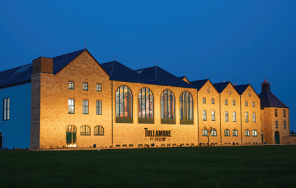Irish whiskey is on an almost unbelievable high at the moment. In the teeth of some difficult economic trade winds, the sector has posted up more than 11% growth. International Wine & Spirit Research reports: “Irish whiskey remains one of the hottest categories in the global marketplace, rising by 10% between 2012 and 2013 to reach a new high of 6.9m cases.
The category has more than doubled since 2004. Much of the credit must go to Irish Distillers which, from 1966, was the sole remaining supplier and had the task of both category and brand building. That task seems less onerous today given the favourable trends, but some forget that, for many years, the Irish category was relatively moribund.”
It goes on: “The big change in the industry is that it is no longer controlled by one producer (Pernod Ricard’s Irish Distillers) and, in recent years, Diageo through its acquisition of Bushmills in 2005, William Grant with Tullamore Dew (2010) and, most recently, Beam with Cooley (2012) have all entered the category.
“There have also been some very interesting and ambitious start-ups, such as the Teeling Whiskey Company, which was formed in June 2012. The Teeling family previously owned Cooley.”
Undoubtedly Irish Distillers’ Jameson is the engine of the growth. The brand represents approximately 80% of the overall sector and is itself 12% up in sales and 9% up in volume, according to Brendan Buckley, ID’s innovation and prestige whiskey director.
In Impact magazine’s top 100 spirits brands, Jameson has leapt 12 places to number 17. One could argue that Jameson is on the way to transcending its category in the same way that Johnnie Walker, Jack Daniel’s and Bacardi have risen above their respective categories.
Asked how Jameson appears to be tearing down barriers, Buckley checks and looks slightly hesitant: “It comes back to taste: the smooth delivery. The taste profile (of Jameson) has phenomenal resonance.”
“You have scotch whisky and US whiskies. Jameson is the third way - very premium but without the pretence of other whiskies. Premium – but accessible,” he says.
John Teeling, former owner of Cooley and now director of the Great Northern Distillery, which is gearing up to produce 6 million litres of pure grain alcohol and 1.8m litres of malt/pot still alcohol, agrees there is something special about Irish whiskey, if not necessarily just Jameson.
He tells DI: “ It’s our climate affecting the grain and the water. I do not believe it comes from maturation. The climate is graceful with no extremes.”
Trained as an economist and with 25 years’ experience in whiskey making, Teeling is convinced that, along with milk, whiskey can and will become a major industry for the republic.
“In the early 19th century Ireland had 2,000 distilleries and 60% of world whisk(e)y sales,” he says.
From being the largest whiskey producer, the decline began in the mid 1800s and Irish slumped to about 2%. Many have blamed Prohibition in the US, but Teeling claims the decline started way before that.




